Oligodendroglioma cell lines containing t(1;19)(q10;p10)
- PMID: 20388696
- PMCID: PMC2940664
- DOI: 10.1093/neuonc/noq031
Oligodendroglioma cell lines containing t(1;19)(q10;p10)
Abstract
Investigating the biology of oligodendroglioma and its characteristic combined deletion of chromosomal arms 1p and 19q, mediated by an unbalanced translocation, t(1;19)(q10;p10), has been hampered by the lack of cell lines that harbor these traits. We grew cells from 2 anaplastic oligodendrogliomas in serum-free conditions. Serial propagation and expansion led to the establishment of permanent cell lines that maintained the genetic signature of the parent oligodendrogliomas and displayed features of brain tumor stem cells in vitro. One line was established from a treatment-naïve tumor and the other from a temozolomide resistant recurrent tumor. These lines may be important tools for understanding the biology of oligodendrogliomas and the function of their defining genetic traits.
Figures
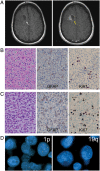
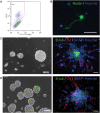


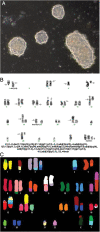
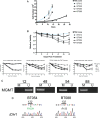
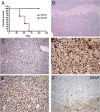
References
-
- Louis DN, Ohgaki H, Weistler OD, Cavenee WK. WHO Classification of Tumors of the Central Nervous System. 4th ed. Lyon, France: IARC; 2007.
-
- Cairncross JG, Ueki K, Zlatescu MC, et al. Specific genetic predictors of chemotherapeutic response and survival in patients with anaplastic oligodendrogliomas. J Natl Cancer Inst. 1998;90:1473–1479. - PubMed
-
- Jenkins RB, Blair H, Ballman KV, et al. A t(1;19)(q10;p10) mediates the combined deletions of 1p and 19q and predicts a better prognosis of patients with oligodendroglioma. Cancer Res. 2006;66:9852–9861. - PubMed
-
- Griffin CA, Burger P, Morsberger L, et al. Identification of der(1;19)(q10;p10) in five oligodendrogliomas suggests mechanism of concurrent 1p and 19q loss. J Neuropathol Exp Neurol. 2006;65:988–994. - PubMed
-
- Cairncross G, Berkey B, Shaw E, et al. Phase III trial of chemotherapy plus radiotherapy compared with radiotherapy alone for pure and mixed anaplastic oligodendroglioma: Intergroup Radiation Therapy Oncology Group Trial 9402. J Clin Oncol. 2006;24:2707–2714. - PubMed
Publication types
MeSH terms
LinkOut - more resources
Full Text Sources
Medical
Research Materials

